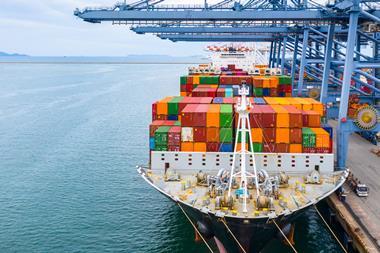Mark Fryer, group financial director, Manganese Bronze, talks to Adrian Leonard about risk management at the relatively small, diversifying motor manufacturing and components group
Manganese Bronze
Manganese Bronze is the manufacturer of London's distinctive Black Taxi TXII, but the quoted company is branching out. Initiatives include the distribution of taxis in the US, licensing the TXII for manufacture and sale in China, and the development of a sophisticated taxi hailing system using GPS satellite technology and mobile phones.
What is the Manganese Bronze approach to risk management?
Our view of risk is broad. Finance is just one aspect; we look at commercial risks, strategic, financial, reputational, operational, health and safety - the list is endless. First and foremost is a half-yearly assessment of Turnbull risks, which we do for every company in the group, including head office. It is an absolutely regimented exercise. The group chief executive and I go out and challenge the managing directors of group companies, get their Turnbull assessment results, and put them to the group audit committee. This year the committee went back to MDs and said, 'we think you have some other risks you haven't considered…'
We consider not only the risks themselves, but also the consequences of their going wrong. Then we rank our management of specific risks according to a red-amber-green measure. For the biggest risks and the reds, we take immediate action to sort them out, be it through insurance policies, or changing the nature of our business strategy.
Could you give some examples?
MARK FRYER We had a key supplier go into liquidation this year. It made us consider our reliance on key suppliers, and our risk assessments showed that we were over-exposed to a few. We had thought carefully about the risk of fire, flood, and other catastrophes that are somewhat beyond our control, and we had insured them; this year we extended our insurance policies to include specific key suppliers.
We complete very regular credit checks on all our customers, but sometimes we have to take managed risks, because we have no other course of action. For one of our operating companies, a single client represents about 30% of its sales. That client's precarious financial condition is well known, but they are too important to drop, so we have taken them from 60 days credit to 30, with a cap of £100,000. We have told them that if any outstandings ever go to the full 30 days, we will stop supplying. When you are small, you have got to watch the pennies.
Also on the financial side, we buy our gearboxes from Japan, so we hedge forward six months on the yen. The finance director of London Taxis International, the manufacturer of the TXII, asks me for clearance on any hedging of that nature. It is a small programme, but our policy is clear, and we have outlined it to shareholders.
What is the risk hierarchy at Manganese Bronze?
MARK FRYER The board is ultimately responsible for risk in the organisation, but we have to rely on a large array of people who may not see risk as a key part of their job remit, including the executive directors, the chief executives, and finance directors of the divisions and operating companies. The finance directors of each business have a dotted line to me, and I regularly sit down with them in isolation of their managing director to ask if their operation is being run well, whether adequate controls are in place, and if everything is okay. That gives them an opportunity to speak out, something I think a lot of companies don't provide. All our people must have the chance to say if the right controls are in place, whether we are taking excessive risks, and what appropriate action to take to mitigate those risks.
During the year we introduced a group policy manual, which makes very clear to all group employees their responsibilities and levels of authority, and where approvals must be sought. The responsibilities range from expenditure to HR policy, leases, buying assets, and negotiating litigation. It is very, very broad. We ask each managing director and financial director to sign off and say they will comply with the policies, and bring deviations to our attention.
Map out your risk reporting system.
MARK FRYER This year we introduced a monthly financial directors' checklist. It is a series of controls whereby we ensure appropriate exercises have been performed, and that nothing is pushed under the carpet: pension contributions are properly paid, accidents are reported, and so on. Each FD either ticks off the item, or reports any control weaknesses back to group.
Every single month the group chief executive and I go out and have operating reviews with every managing director in the group. That can include a review of health and safety, strategic projects, that month's operating results, their six and 12 month outlooks - anything important that is going on. Very often that covers the risks in the business.
What has been done to embed a risk-aware culture at Manganese Bronze?
MARK FRYER The headline on the front page of our current employee magazine is 'Putting Health & Safety First'. Every single person must think about risk, beginning with the personal risk to themselves.
How does one embed that? We have to lead by example, to walk the talk. Further up, we look at the strategic, operational, and financial risks, but on the shop floor it is personal safety first. Next comes the quality of product, and what is right for the customer. If we all delight the customer and look after ourselves, the bottom line should look after itself.
Your venture in China with the motor manufacturer Brilliance has not gone especially smoothly. What risk management measures were taken before it began?
MARK FRYERWe did background checks and research on the company and its managers, and took advice from a number of companies with similar types of licence agreement in China. We made a number of visits to get to know our potential licensee. We contracted with their holding company, which is registered in Bermuda, and quoted on the New York Stock Exchange, so our agreement is subject to US law, which we understand better than Chinese law. And we put a great deal of work into the agreement.
What risk assessment process was undertaken in advance of the development and implementation of the Zingo taxi hailing system?
MARK FRYER It is fair to say that for a company of our size, Zingo is a significant undertaking. We had a business plan that assessed all the risks and opportunities, but, as with any major project, ambitious goals and milestones were set. We haven't experienced any risks that we did not predict at the start of the project, although they have come on different scales. For example, some partners haven't supported us as much as we would like.
Has risk assessment and management changed since 11 September?
MARK FRYER We have seen an impact on our insurance premiums, and a clear change in business confidence, which has impacted on our taxi sales. American tourists are not coming to London, so taxi drivers are not as confident. One result is that every plant now has a disaster recovery plan. We do not have back-up systems - we can't afford to duplicate every system - so we have had to look at more cost-effective ways to have disaster recovery plans. They include buying system time from other companies, for example.
Has Manganese Bronze calculated its cost of risk?
MARK FRYER I'd be lying if I said I had, but you see the cost each month that budgets are not made. A variance analysis shows that you have not foreseen a risk materialising, but it did. Underperformance against expectation is one of the ways of measuring failure to assess risk; when a company issues a profit warning, it is because something happened, and that is generally because they did not foresee a risk that they probably ought to have.
That means we must all keep concentrating on risk. The higher the expectation of better performance, the more it pushes you to take risks. But in today's market there is more to be careful of: suppliers going bust, legal claims, customers not paying, and increasing legal and regulatory requirements… it is a more dangerous world than it has ever been. So we have a policy manual, twice yearly risk assessments, staff in head office performing assessments of risk and financial controls, an annual audit, monthly reviews. This is as much as we can do - we have to take measured risks to generate better returns for our stakeholders.



















